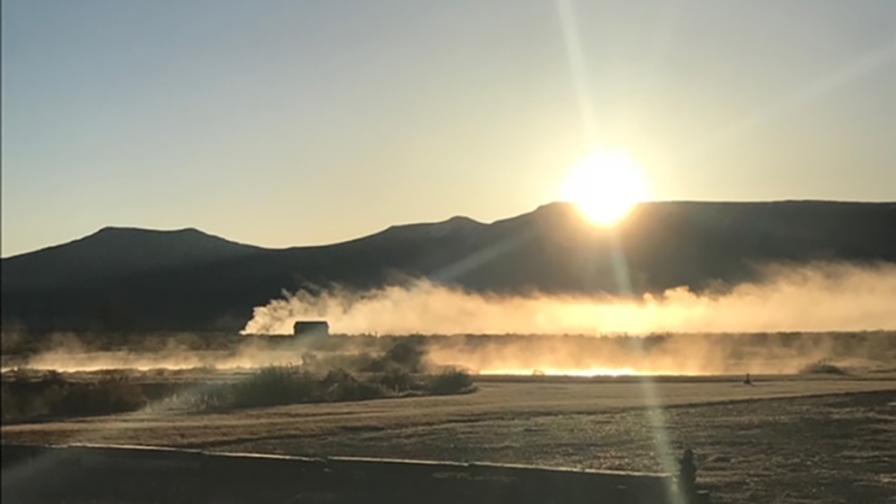Geothermal Energy: A Renewable Resource Worth a Look for Greenhouse Growers

Geothermal harnesses the power of the earth beneath our feet as an energy source to generate energy and heat and cool facilities. Photo by Curt Rose/Warner Mountain Energy
Lowering energy consumption and minimizing CO2 emissions have become important goals for controlled-environment operations that seek a sustainable future. Alternative energy sources will play a bigger role in the future as more growers seek out energy-efficient solutions for heating and cooling. Geothermal energy is one alternative source often overshadowed by the focus on solar and wind power. Nevertheless, it’s worth a further look for its future potential as part of a sustainable operation.
What is Geothermal Energy?
Geothermal harnesses the power of the earth beneath our feet as an energy source to generate energy via power plants, enhanced geothermal solutions, direct use, and geothermal heat pumps, according to the Geothermal Rising website. It is a clean and renewable energy source with a steady output available 24/7 that emits near-zero CO2 and generates very little air pollution.
What Types of Geothermal Resources Are Available?
When harnessed, geothermal resources can be used to heat and cool greenhouses and other facilities. These resources come in different forms:
Soil temperatures at 5 to 6 feet in depth average around 50⁰F, depending on soil type and environmental conditions above-ground. Soil-heated air can be used directly or indirectly via a heat pump to heat greenhouses.
Heat pumps are available as air to air, air to water, water to water, or water to air systems. According to the U.S. Office of Energy Efficiency and Renewable Energy, one advantage of using heat pumps is they concentrate naturally existing heat, rather than producing heat through the combustion of fossil fuels.
Natural thermal wells and springs can provide hot water to use directly for heating. Heated water can also be distributed through fin-tube radiators or hydronic convectors that act as heat exchangers to supply heat to a facility.
Steam from geysers can be tapped for power generation, but not for greenhouse heating because of the high temperatures generated.
One other type of geothermal resource that can be used for cooling is the direct use of cooler water found deep below the earth’s surface.
What About Return on Investment?
According to “Geothermal Heat for Greenhouses,” authored by the University of Connecticut emeritus Extension professor John Bartok, Jr., payback for alternative heating shortens as the cost of fossil fuels increase.
“For most geothermal systems, the payback is typically less than 10 years with energy prices at $25/MBtu (equivalent to #2 fuel oil at $2.50/gal),” Bartok says in the article. “In some cases, it can be significantly better than that, in the range of three to seven years, depending on the geothermal source, cost of the system, and quantity of fossil fuel displaced.”
Where Can I Learn More?
If you want to delve deeper into geothermal energy, the following websites are good places to start your research.
- Office of Energy Efficiency and Renewable Energy (energy.gov)
- Farm Energy (Farm-Energy.extension.org; Search “Geothermal Heat for Greenhouses”)
- ThinkGeoEnergy (thinkgeoenergy.com)
- Geothermal Rising (Geothermal.org; formerly Geothermal Resources Council)
- National Energy Authority Iceland (nea.org)
University Resources:
- The University of Nevada Reno (UNR.edu)
- Colorado School of Mines (mines.edu)
- California Geothermal Energy Collaborative University of California-Davis (cgec.ucdavis.edu)
- The University of Massachusetts (ag.umass.edu, Search “Geothermal Heat for Greenhouses”)
State and Federal Resources:
- California Energy Commission (energy.ca.gov)
- United States Department of Ag (usda.gov)
- United States Geological Survey (usgs.gov)









